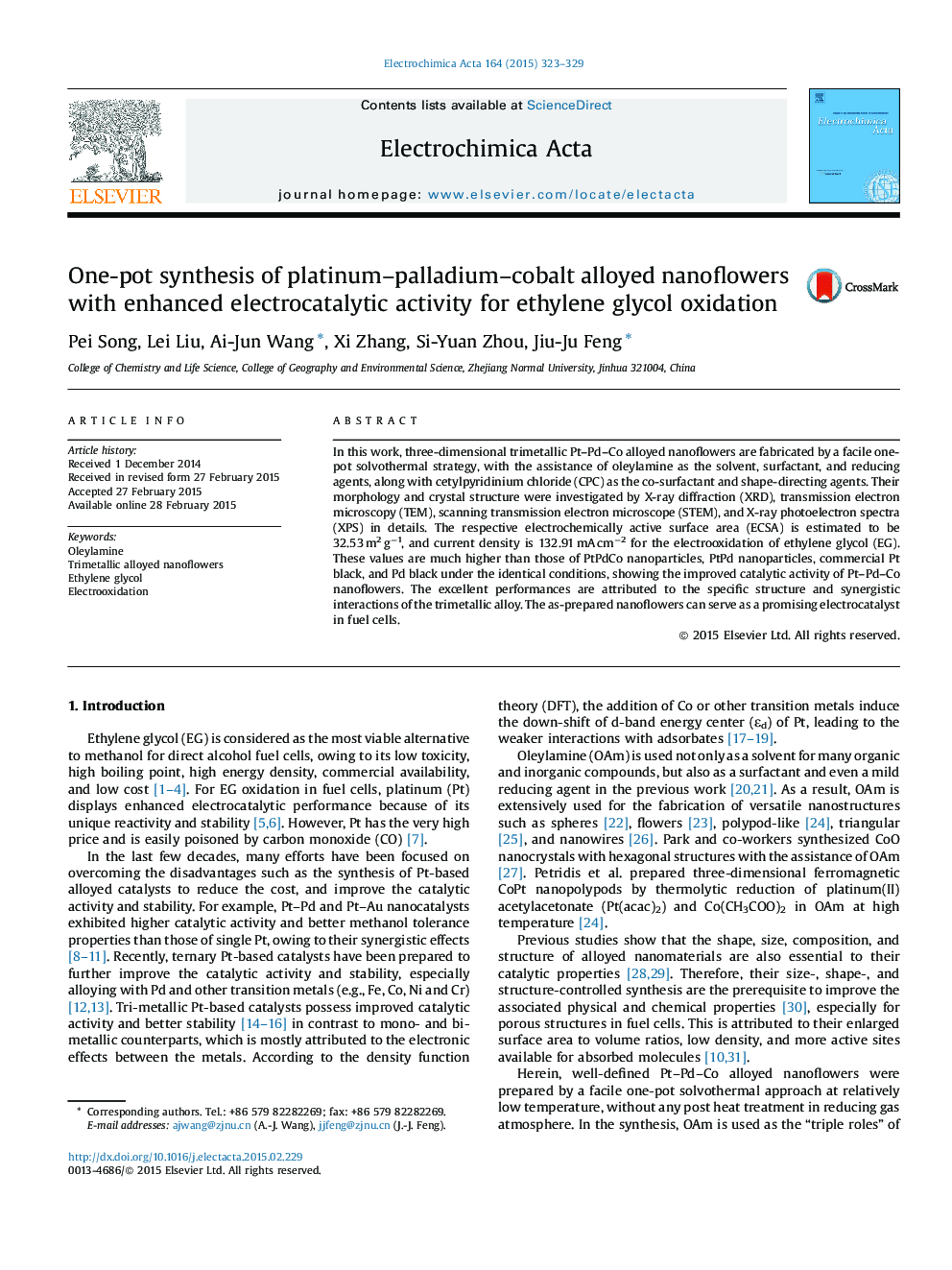| Article ID | Journal | Published Year | Pages | File Type |
|---|---|---|---|---|
| 184307 | Electrochimica Acta | 2015 | 7 Pages |
•Pt–Pd–Co alloyed nanoflowers were prepared by a facile one-pot solvothermal method.•Oleylamine was used as the solvent, surfactant and reducing agents.•CPC was employed as the co-surfactant and shape-directing agents.•Pt–Pd–Co nanocrystals exhibited improved electrocatalytic activity and high stability for EG oxidation.
In this work, three-dimensional trimetallic Pt–Pd–Co alloyed nanoflowers are fabricated by a facile one-pot solvothermal strategy, with the assistance of oleylamine as the solvent, surfactant, and reducing agents, along with cetylpyridinium chloride (CPC) as the co-surfactant and shape-directing agents. Their morphology and crystal structure were investigated by X-ray diffraction (XRD), transmission electron microscopy (TEM), scanning transmission electron microscope (STEM), and X-ray photoelectron spectra (XPS) in details. The respective electrochemically active surface area (ECSA) is estimated to be 32.53 m2 g−1, and current density is 132.91 mA cm−2 for the electrooxidation of ethylene glycol (EG). These values are much higher than those of PtPdCo nanoparticles, PtPd nanoparticles, commercial Pt black, and Pd black under the identical conditions, showing the improved catalytic activity of Pt–Pd–Co nanoflowers. The excellent performances are attributed to the specific structure and synergistic interactions of the trimetallic alloy. The as-prepared nanoflowers can serve as a promising electrocatalyst in fuel cells.
Graphical abstractA facile one-pot solvothermal method was developed for synthesis of Pt–Pd–Co alloyed nanoflowers using oleylamine as the solvent, surfactant and reducing agents, along with cetylpyridinium chloride (CPC) as the co-surfactant and shape-directing agents. The nanocrystals displayed highly electrocatalytic activity and stability toward EG oxidation.Figure optionsDownload full-size imageDownload as PowerPoint slide
